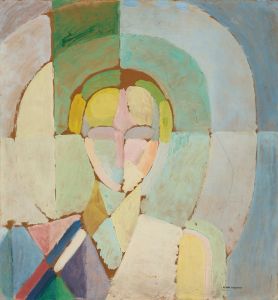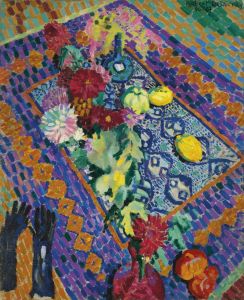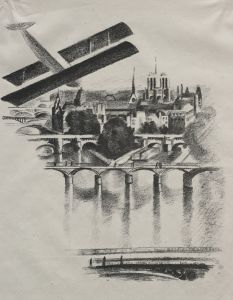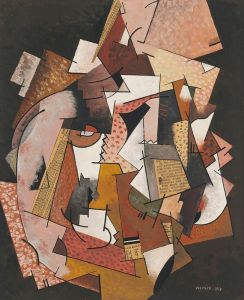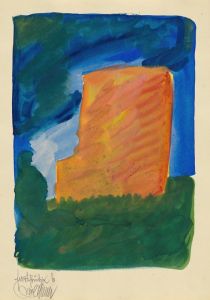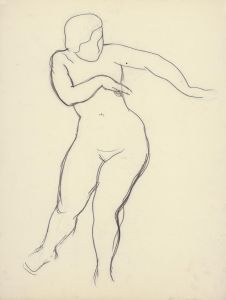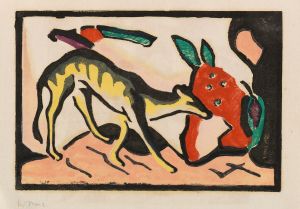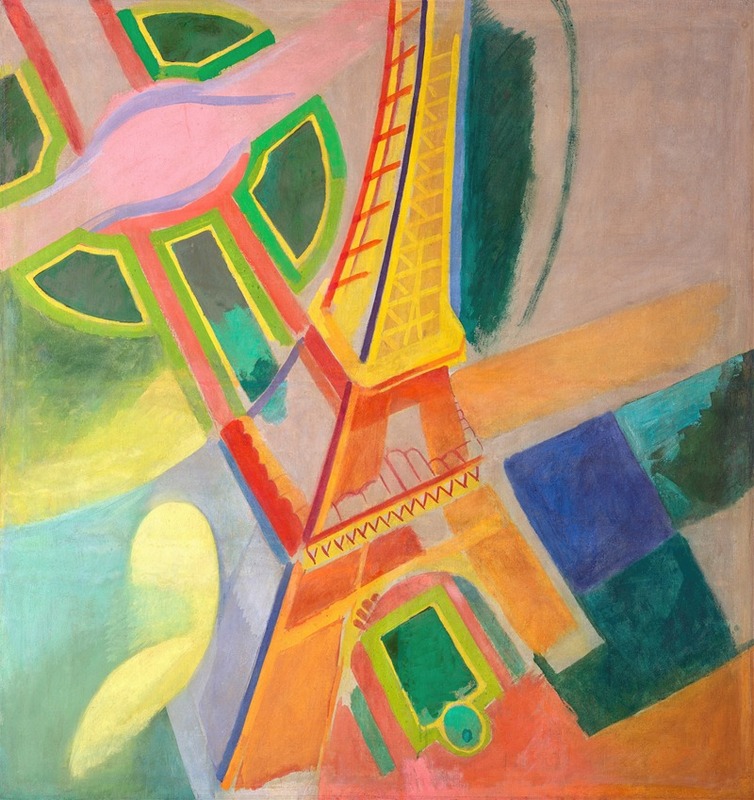
Eiffel Tower
A hand-painted replica of Robert Delaunay’s masterpiece Eiffel Tower, meticulously crafted by professional artists to capture the true essence of the original. Each piece is created with museum-quality canvas and rare mineral pigments, carefully painted by experienced artists with delicate brushstrokes and rich, layered colors to perfectly recreate the texture of the original artwork. Unlike machine-printed reproductions, this hand-painted version brings the painting to life, infused with the artist’s emotions and skill in every stroke. Whether for personal collection or home decoration, it instantly elevates the artistic atmosphere of any space.
Robert Delaunay's "Eiffel Tower" is a celebrated work that exemplifies the artist's fascination with modernity and the dynamic energy of urban life. Painted in 1910, this piece is part of a series of works by Delaunay focusing on the iconic Parisian landmark, the Eiffel Tower. Delaunay, a French artist, was a key figure in the development of Orphism, an offshoot of Cubism that emphasized vibrant color and abstract forms.
The painting captures the Eiffel Tower from a unique perspective, showcasing Delaunay's innovative approach to composition and form. Unlike traditional representations of the tower, Delaunay's version is fragmented and abstracted, reflecting the influence of Cubism. The structure is depicted with a series of intersecting planes and vibrant colors, which convey a sense of movement and dynamism. This approach allows the viewer to experience the tower not just as a static object, but as a symbol of the bustling, ever-changing city of Paris.
Delaunay's use of color is particularly noteworthy in this painting. He employs a vivid palette, with bold reds, blues, and yellows that create a sense of rhythm and harmony. This use of color is characteristic of Orphism, which sought to evoke emotion and sensation through abstract forms and vibrant hues. The interplay of colors in "Eiffel Tower" enhances the sense of movement and energy, drawing the viewer into the scene.
The painting also reflects Delaunay's interest in the relationship between art and technology. The Eiffel Tower, completed in 1889, was a marvel of engineering and a symbol of modernity. By choosing this subject, Delaunay aligns himself with the avant-garde movement, which celebrated technological progress and the new possibilities it offered for artistic expression. The fragmented forms and dynamic composition of the painting suggest the influence of contemporary developments in science and technology, such as the theories of simultaneity and the fourth dimension.
Delaunay's "Eiffel Tower" is not only a tribute to a modern architectural icon but also an exploration of the possibilities of painting in the early 20th century. It reflects the artist's desire to capture the essence of modern life and to push the boundaries of traditional artistic conventions. The painting is a testament to Delaunay's innovative spirit and his contribution to the development of abstract art.
Today, Robert Delaunay's "Eiffel Tower" is recognized as a significant work in the history of modern art. It is housed in various collections, with different versions and studies of the tower existing in museums around the world. The painting continues to be celebrated for its bold use of color, its dynamic composition, and its reflection of the spirit of its time. Through this work, Delaunay has left a lasting legacy, influencing generations of artists and shaping the course of 20th-century art.






